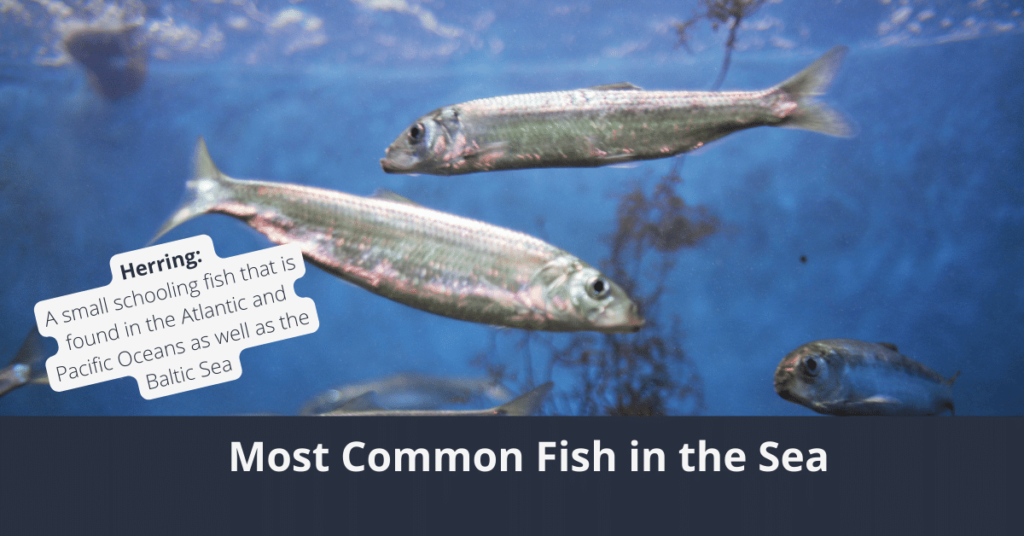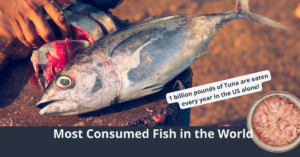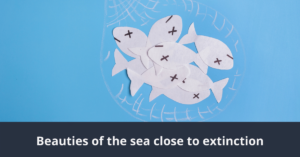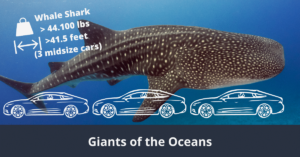Fish are a vital part of our ecosystem, transporting nutrients and providing food to humans and other animals (including larger fish). We’re always hearing about overfishing and declining fish populations, but it’s rare to hear about the fish species that are thriving.
Let’s look at the most common fish in the sea and learn a little more about these hardy species. You might be surprised to find that many of the fish on this list are species that you’ve never even heard of!
Everything you will learn here
- Most Common Fish in the Sea
- 1. Cyclothone Bristlemouth – by far the most common fish in the sea
- 2. Fluke/Summer Flounder – common, but strange looking fish in the sea
- 3. Anchovy – this fish in the sea is still common, but overfished
- 4. Mackerel – a common fish in the sea, weighing up to 100 pounds (ca. 45 kg)
- 5. Largehead Hairtail – unusual yet common fish in the sea
- 6. Herring — very common commercial fish in the sea
- 7. Crevalle Jack – common fish in the sea in the middle of the food chain
- 8. Sprat – common commercial fish in the sea
- 9. Sardine/Pilchard- another common commercial fish in the sea
- 10. Porgies/Sea Breams – common tropical fish in the sea
- Wrap-up of the most common fish in the sea
Most Common Fish in the Sea
If you’ve ever wondered what sea creatures are swimming the depths below your boat or near you as you enjoy the ocean, now you can gain some insight. While the following ten species don’t inhabit all corners of the ocean, they boast of incredible population numbers.
1. Cyclothone Bristlemouth – by far the most common fish in the sea
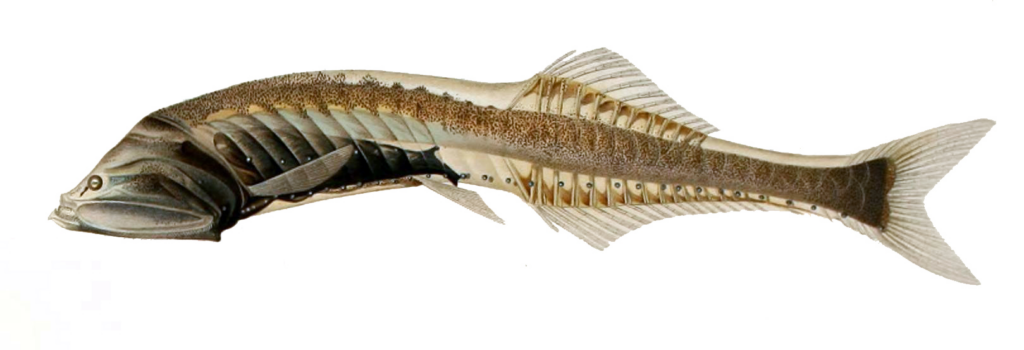
The Cyclothone bristlemouth is by far the most common fish in the sea, with a population of an impressive 1 quadrillion in the ocean today. These tiny fish usually only grow to about 3 inches (ca. 8 cm) long and spend their time several hundred meters below the surface.
Named for their bristle-like teeth, these bioluminescent fish generally range from transparent to a dusty tan color. They’re specially adapted to survive in the extreme conditions found in such deep water, allowing them to hunt for whatever smaller fish they can find while avoiding being eaten by larger ones.
Because bristlemouths live in the deep sea, they haven’t been studied extensively by scientists yet, despite they exist in the trillions. The species wasn’t even discovered until the 1930s, which just goes to show how much we don’t yet know about the creatures who live many leagues under the sea.
“They’re everywhere,” Bruce H. Robison, a senior marine biologist at the Monterey Bay Aquarium Research Institute in California, said to the tiny Bristlemouth to the New York times. He then goes on: “Everybody agrees. It’s the most abundant on the planet.”
An Ocean Mystery in the Trillions – The New York Times June 29, 2015
2. Fluke/Summer Flounder – common, but strange looking fish in the sea
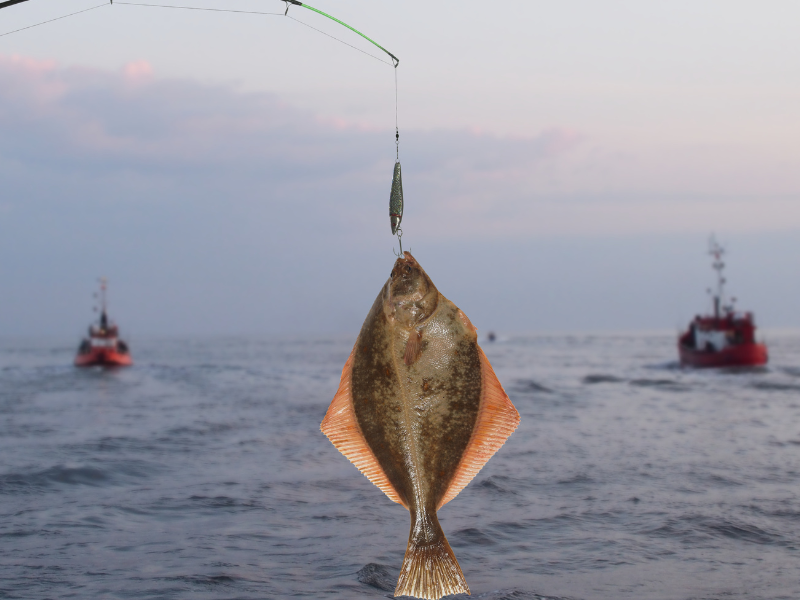
Fluke, also called summer flounder, is a large flatfish abundant along the eastern coast of North America, from Nova Scotia down to Florida. If you’ve spent any time learning about fish, you know that there are some strange looking species out there – well, fluke is definitely one of them.
At first glance, fluke are shaped like any other ordinary fish, with dorsal and pectoral fins in the usual spots. But if you look closely, you’ll notice that both of its eyes are on one side of its head. This is because what looks like its right side is actually its belly, and it lies flat on the ocean floor where it keeps watch, waiting to ambush prey.
Summer flounder can change colors to help with camouflage, changing to darker colors like gray and black or even brighter blues, greens, and oranges at will. The females of this species can grow up to 20 pounds, while males only reach about 5 pounds in weight.
3. Anchovy – this fish in the sea is still common, but overfished
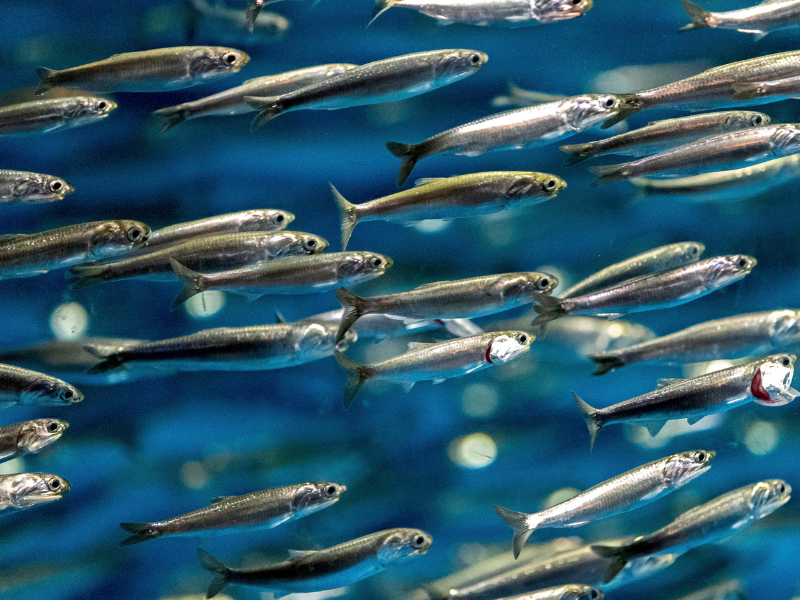
Anchovies are small, thin fish that reach between 4-10 inches in length. They’re green with a blue reflection and have large mouths that extend past their eyes.
Anchovies are an important feeder fish, meaning that they’re near the bottom of the food chain and are therefore important food sources to many other animals. Anchovies themselves live on plankton, which they filter in through their open mouths while swimming.
There are well over a hundred species of anchovies all over the world. They can be found in the Atlantic, Pacific, and Indian oceans, as well as in the Mediterranean along the Black, Alboran, and Aegean seas.
Because anchovies are so popular as food, they’re in danger of being overfished. Their population declined rapidly in the 80s and 90s but has rebounded in recent years. There are now an estimated 32 megatons of anchovies in the sea today.
4. Mackerel – a common fish in the sea, weighing up to 100 pounds (ca. 45 kg)
Mackerel is a catch-all term for about 30 species of fish. Most mackerels belong to the Scombridae family, which also includes tuna. Most mackerel live relatively close to the shore, with some species sticking to the deeper open sea.
Most species of mackerel are gray or silver with stripes or spots and a forked tail. Generally speaking, species that live closer to the shore tend to be smaller than species that live further out, such as the enormous king mackerel, which can reach 100 pounds (ca. 45 kg).
Mackerel mostly live in the Atlantic and Pacific oceans, and there are an estimated 57 billion of these fish in the North Atlantic alone. Their population has increased so dramatically, in fact, that scientists blame them for the decline in wild salmon populations in the area.
5. Largehead Hairtail – unusual yet common fish in the sea

Largehead hairtail are long, eel-like fish that live in temperate and tropical oceans all over the globe. Although they’re found all over, hairtail mostly stick to the shallow waters near the coast where they can hide in the muddy bottom. They usually grow to about 4 feet long.
These unusual fish are a beautiful silvery-blue color. But don’t get too close; these predatory fish have sharp teeth and a bad temper! Adults are even known to attack and cannibalize younger largehead hairtails.
Adults mostly eat other fish but will sometimes go after squid and octopus. Younger hairtail lie at the bottom of the sea during the day, coming up to the surface at night to eat krill and small fish.
6. Herring — very common commercial fish in the sea
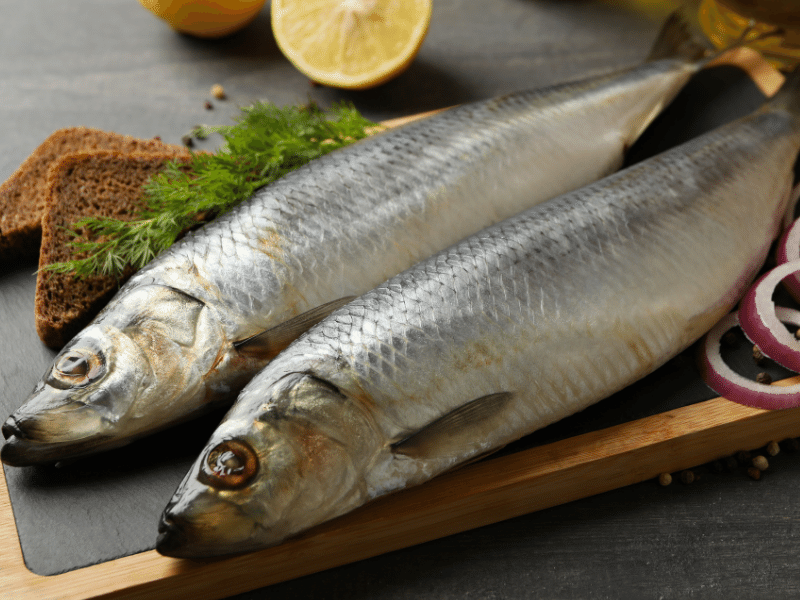
Herring are small schooling fish that are found in the Atlantic and Pacific Oceans as well as the Baltic Sea. There are several species of herring distributed around the globe, acting as an important food source to many predatory fish, sea birds, and, of course, people.
One of the most important commercial fish, herring aren’t only systematically fished by humans. Whales, seals, and other predators have perfected the art of rounding schools of herring into a compact area, then going in for the kill in coordinated attacks.
These silver fish grow between seven and 15 inches, depending on the species, swimming in schools as they forage for plankton, arrow worms, snails, fish eggs, and small crustaceans. If you’re not quite sure what we mean when we say a fish is one of the most common in the sea, picture a school of Atlantic herring, which can contain several billion individuals.
7. Crevalle Jack – common fish in the sea in the middle of the food chain
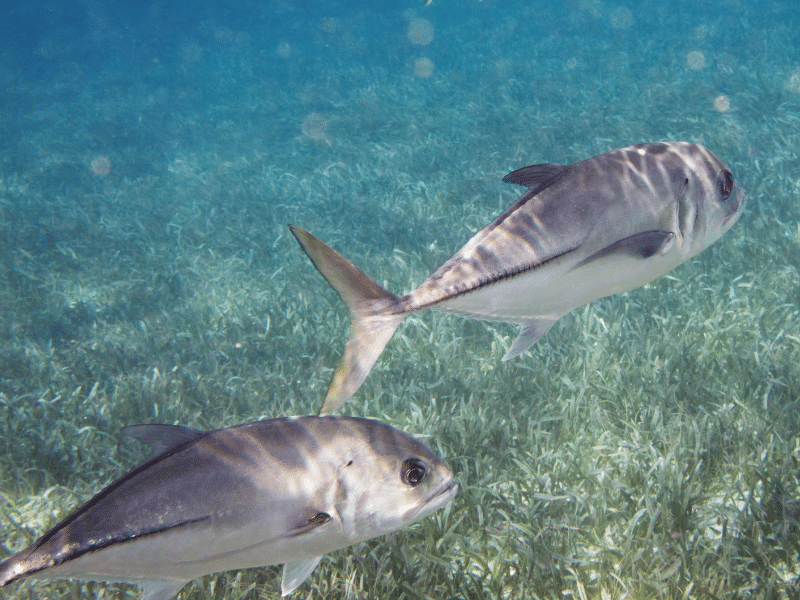
Crevalle Jacks are common in the temperate and tropical waters of the Atlantic Ocean. They migrate towards warmer waters during winter and can easily die if they find themselves in water that’s too cold. Younger Crevalle Jacks tend to live inshore, with adults moving to deeper offshore waters.
Crevalle Jack are blue or green on the top, with their color fading to silver underneath. They have black spots that sit parallel with their eyes, which are half-covered with adipose eyelids. This fish can grow up to 4 feet (1.22 m) long, although 2.5 feet (0.76 m) is more common.
This species has both regular and canine teeth, which it can rub together while expelling gas from its air bladder to make croaking sounds. This fish sits in the middle of the food chain, hunting smaller fish in schools while trying to avoid becoming lunch to bigger fish and seabirds.
8. Sprat – common commercial fish in the sea
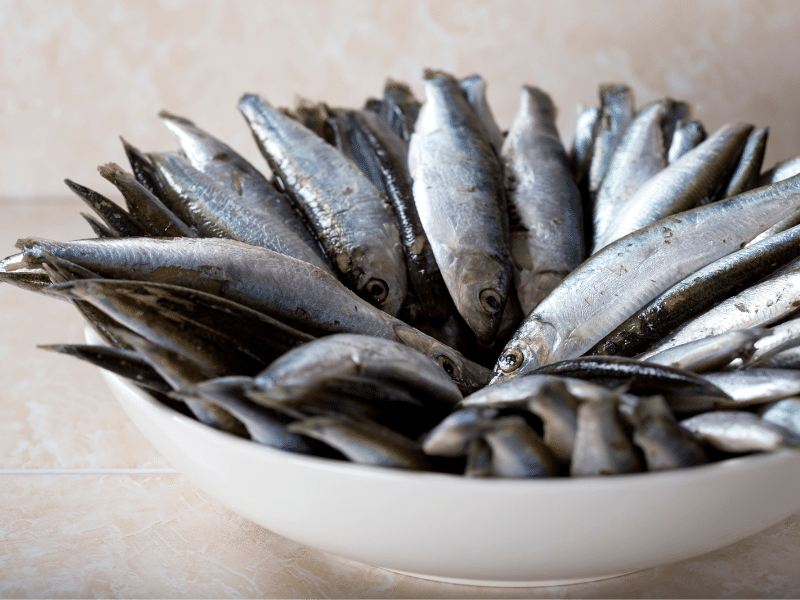
Sprat are small forager fish that are often mistaken for sardines and anchovies. They have a high concentration of Omega-3 fatty acids and are considered a sustainable food source. As such, they are growing in popularity among diners.
These fish can be found in both the Atlantic and Pacific oceans and are especially important in the Baltic Sea. Sprat are important commercial fish as well as a staple food source for other commercial fish such as cod.
There are six species of true sprats, as well as about 48 species that are often called sprats but don’t belong to the sprattus species. They tend to be silver or grey in color and can grow up to about 6 inches, although 4 is more common.
9. Sardine/Pilchard- another common commercial fish in the sea
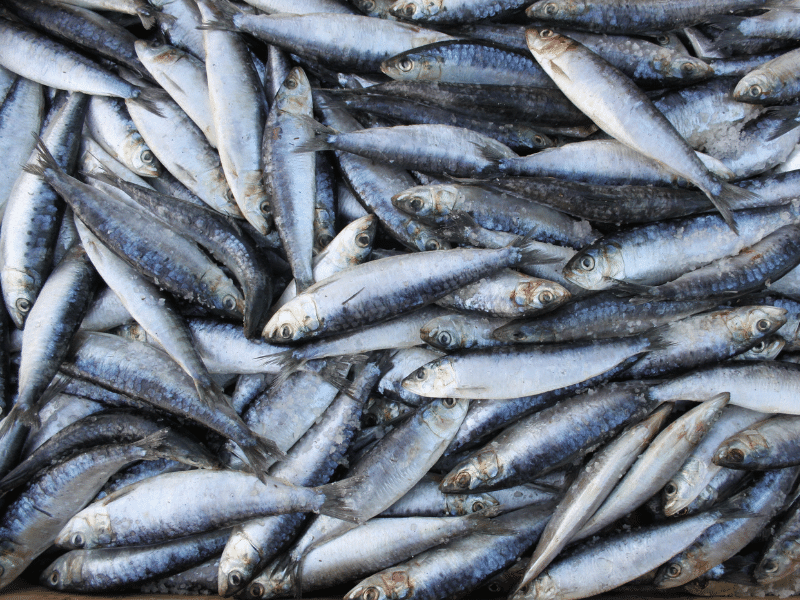
Sardines, also called pilchard, are one of the most common fish in the sea by nature, although commercial overfishing has significantly reduced their population. Their numbers are rising, though, thanks to commercial fishing regulations put in place.
Pilchard belong to the same family as other well-known feeder fish like anchovies and sprat. These small schooling fish vary in color depending on the species, but most are silver with hints of tan, orange, blue, and even purple. Some have marks such as stripes or dots.
Sardines mostly eat zooplankton, so when unhealthy ocean conditions cause zooplankton to die off, there is a correlated decline in sardine numbers.
10. Porgies/Sea Breams – common tropical fish in the sea
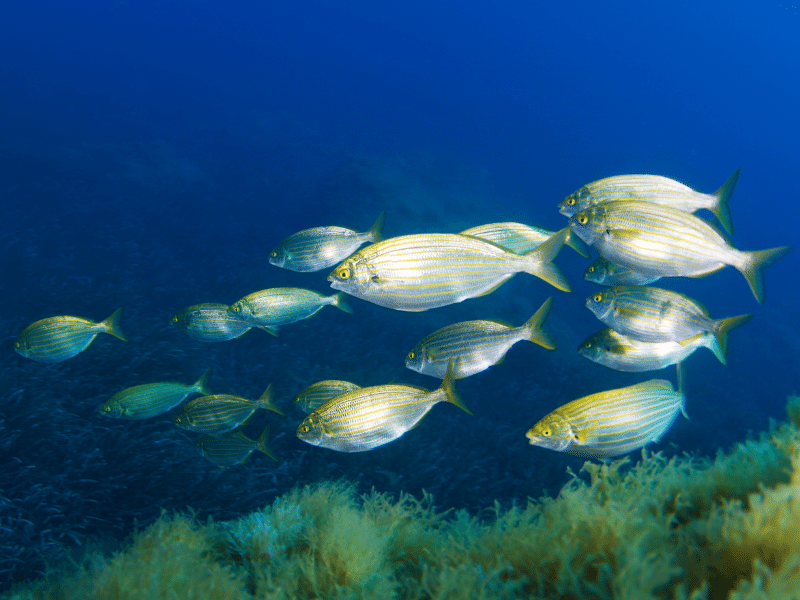
Porgies, also sometimes called sea breams, are found in temperate and tropical oceans, mostly inshore. The term porgy refers to any fish in the family Sparidae, of which there are 155 distinct species.
Sea breams have small mouths but strong teeth, allowing them to prey on small invertebrates and other fish. They typically grow up to 30 inches long.
As you might expect, each of the hundred-plus types of porgy look a little different. They typically have high backs, a single dorsal fin, plus pelvic, anal, and pectoral fins. They range in color from white to silver or tan, and even red. They often have stripes or spots of varying intensities and colors.
(interested in reading about the most consumed fish species? read here; Most Consumed Fish in the World)
Wrap-up of the most common fish in the sea
Now that you have a better idea of what the most common fish in the sea are, you’ll be able to keep an eye out for them the next time you’re on the water. Whether you go fishing, scuba diving, or snorkeling in Curacao or a similar scenic spot does not matter, as you can encounter these common fish during either sport. If you spend a lot of time on the ocean, you might even be able to spot every fish on this list eventually! But let’s be honest for a second, how many of the most common fish in the sea did you already know? — Likely some, but did you know the most common fish, who lives in the deep sea?
___
*Source:Résultats des campagnes scientifiques accomplies sur son yacht par Albert Ier, prince souverain de Monaco Albert I, Prince of Monaco, 1848-1922

